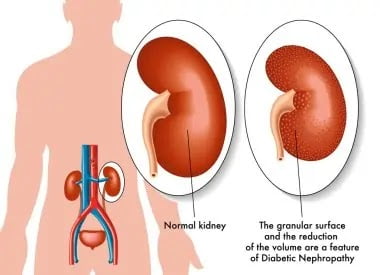
Introduction
In a groundbreaking study, researchers have discovered that lixisenatide, a type 2 diabetes medication, could potentially play a crucial role in slowing down the progression of Parkinson’s disease. Parkinson’s is a chronic neurodegenerative disorder affecting millions of individuals worldwide, resulting in movement difficulties, impaired balance, and memory challenges among other symptoms. While current treatments aim to manage symptoms, no definitive cure has been found. However, with the advent of glucagon-like peptide 1 receptor agonists (GLP-1R agonists), such as exenatide, a new avenue of hope has emerged.
The Exciting Potential of GLP-1R Agonists
GLP-1R agonists initially garnered attention for their efficacy in managing type 2 diabetes and aiding weight loss. Notably, exenatide exhibited promising results by slowing the progression of motor symptoms in a small group of Parkinson’s patients. Building upon this foundation, researchers have now turned their focus to lixisenatide, another GLP-1R agonist used in the treatment of type 2 diabetes.
New Findings: Lixisenatide and Parkinson’s Disease
A recent study conducted in France investigated the potential benefits of lixisenatide for Parkinson’s patients. The researchers randomly divided 156 individuals newly diagnosed with Parkinson’s into two equal-sized groups. Both groups continued their regular Parkinson’s medication regime, but one group received an additional daily injection of lixisenatide, while the other received a placebo.
Throughout the study, participants underwent comprehensive examinations of their motor symptoms and were given scores on a disease severity scale. The results are nothing short of remarkable: after 12 months, the group receiving lixisenatide showed virtually no progression of motor problems, while the placebo group experienced worsening symptoms, with a decrease of approximately three points on the 132-point assessment scale. Although this difference may seem modest, it is considered clinically significant, indicative of the potential effectiveness of lixisenatide in Parkinson’s disease.
Implications and Additional Observations
What makes these findings even more promising is their sustained impact. Even two months after discontinuing the trial and ceasing other Parkinson’s medications, those who received lixisenatide maintained their stable motor symptoms. This suggests that lixisenatide not only reduces symptoms but also protects against the loss of neurons in the brain associated with Parkinson’s disease.
However, it’s essential to consider potential side effects. Approximately half of the participants receiving lixisenatide reported experiencing nausea, and 13% reported vomiting. These adverse effects must be addressed and balanced against the medication’s potential benefits.
Future Directions and Clinical Trials
While this study undeniably holds promise, further research is needed to provide more comprehensive insights. To build on these findings, scientists now face the crucial tasks of determining whether lixisenatide truly slows disease progression, whether the benefits endure over time, whether increased dosages yield enhanced results, and whether the medication can benefit individuals at various stages of Parkinson’s disease.
Heather Mortiboys, a respected professor of cellular neuroscience and metabolism at the University of Sheffield, lauds the study’s outcomes and believes they pave the way for larger phase 3 clinical trials. The significant reduction in motor symptom progression compared to the placebo group is a major step forward in the scientific quest to develop effective treatments for Parkinson’s disease.
A Promising Future

The recent research on lixisenatide represents an exciting development in the fight against Parkinson’s disease. While there is still much to be done before this treatment becomes widely available, the evidence underscores the potential of GLP-1R agonists in managing the progression of this debilitating condition. With further studies and clinical trials, we may soon witness a revolutionary breakthrough that will improve the lives of millions affected by Parkinson’s disease.
The diagram above illustrates the potential mechanism of action of lixisenatide in slowing down the progression of Parkinson’s disease. By targeting insulin resistance in the brain, it may help protect against the loss of neurons and reduce motor symptoms. However, it is vital to note that this is a simplified representation and further research is required to fully understand the complex biological processes involved.
Conclusion
the recent findings on the potential of lixisenatide in slowing the progression of Parkinson’s disease offer hope and encouragement to patients and researchers alike. This breakthrough paves the way for future investigations and larger clinical trials, which will help determine the true efficacy and safety of this medication. As we continue to explore innovative treatments, we remain committed to advancing our understanding of Parkinson’s disease and striving for improved outcomes for all those affected by this condition.
FAQs
Q: What is Parkinson’s disease, and how does it impact individuals?
Parkinson’s disease is a chronic neurodegenerative disorder that primarily affects the motor system. It is characterized by the loss of nerve cells in the brain, leading to various symptoms such as tremors, rigidity, impaired balance and coordination, and difficulty with movement. As the disease progresses, it can also cause non-motor symptoms like memory problems, speech difficulties, and mood changes.
Q: What are GLP-1R agonists, and how do they relate to Parkinson’s disease treatment?
GLP-1R agonists are a class of medications primarily used for the treatment of type 2 diabetes. These drugs mimic the action of a hormone called glucagon-like peptide 1 (GLP-1) and help regulate blood sugar levels. Recent research has shown that certain GLP-1R agonists, like exenatide and lixisenatide, may also have potential benefits in slowing down the progression of Parkinson’s disease. They appear to protect against the loss of neurons in the brain and reduce motor symptoms associated with Parkinson’s.
Q: How does lixisenatide differ from other GLP-1R agonists?
Lixisenatide is a type 2 diabetes medication belonging to the class of GLP-1R agonists. It is similar to other drugs in this class, such as exenatide, semaglutide, and liraglutide, which have shown promise in managing diabetes and promoting weight loss. However, what sets lixisenatide apart is its ability to cross the blood-brain barrier, allowing it to potentially target the underlying neurodegenerative processes associated with Parkinson’s disease.
Q: What were the main findings of the recent study on lixisenatide for Parkinson’s disease?
In the study, individuals with recently diagnosed Parkinson’s disease were divided into two groups. One group received lixisenatide in addition to their regular Parkinson’s medication, while the other group received a placebo. After 12 months, those receiving lixisenatide showed little to no progression in motor symptoms, whereas the placebo group experienced worsening symptoms. The results indicated that lixisenatide has the potential to slow down the progression of Parkinson’s disease and may provide neuroprotective effects.
Q: What are the potential benefits and side effects of lixisenatide in Parkinson’s disease treatment?
The study suggests that lixisenatide not only reduces motor symptoms but also protects against the loss of neurons in the brain. This represents a significant step forward in the search for effective treatments for Parkinson’s disease. However, it’s important to note that approximately half of the participants receiving lixisenatide reported experiencing nausea, and 13% reported vomiting as a side effect. Further research is necessary to fully understand the medication’s safety profile, determine optimal dosages, and explore potential benefits in different stages of Parkinson’s.


